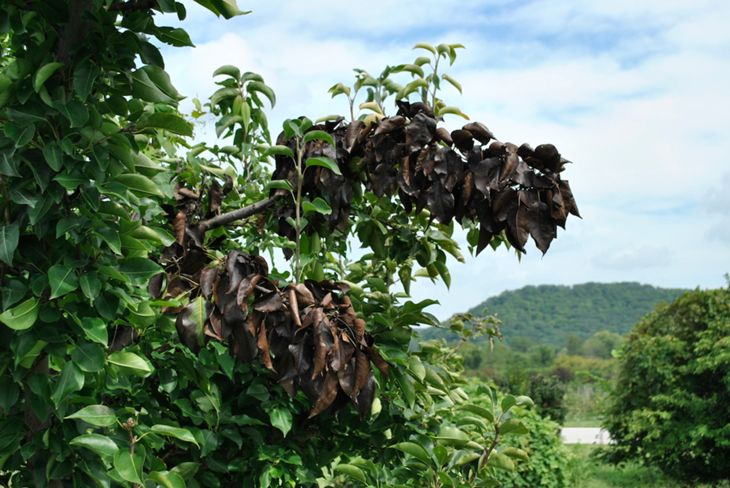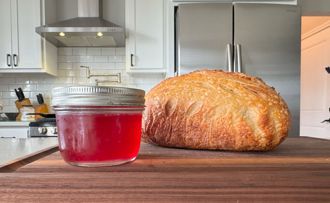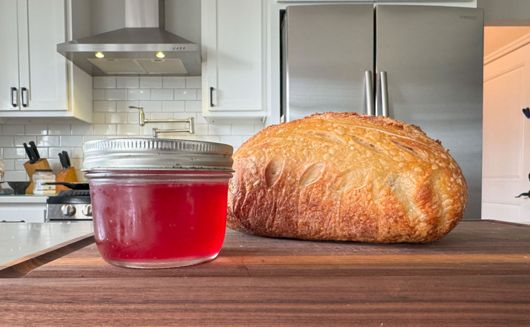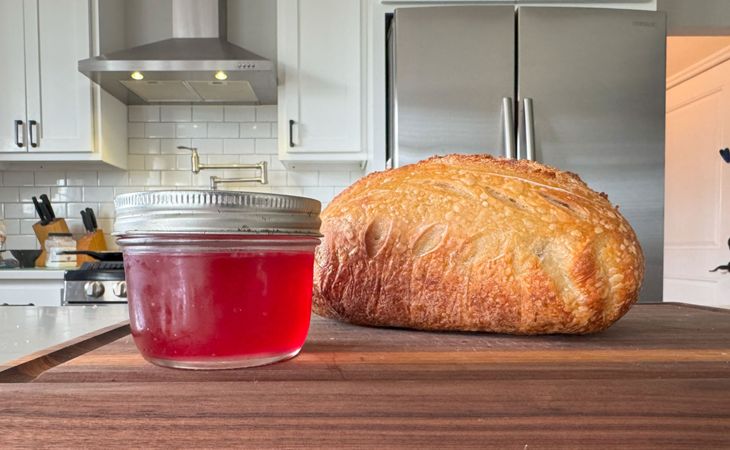Understanding Fire Blight
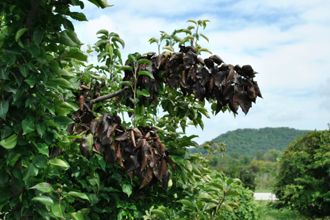
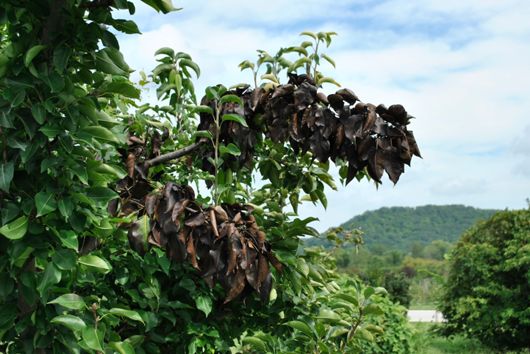
Hello, my fellow fruit-lovers! It has been very cool and wet here this past spring and summer. Of course, these are ideal conditions for fungal and bacterial diseases to infect fruit trees, as well as other trees and shrubs. Since the weather can stimulate certain bacterial diseases, I thought you backyard fruit gardeners might like some background on, and ideas on how to control, one of the most prevalent bacterial diseases affecting fruit trees (like apples, pears, and quince) – fire blight.
What is Fire Blight?
Fire blight is a contagious, systemic, bacterial disease. Bacteria (erwinia amylovora) attack the blossoms in early spring and then move up the twigs and branches through the tree's system. The name "fire blight" comes from the scorched appearance of the infected leaves, stems, and bark. These areas may appear black, shrunken, and cracked. Blossoms will turn brown, wilt, and die about 1-2 weeks after infection occurs.
Fire blight may also exhibit an amber-colored ooze (which is heavy with bacteria) from the bark of the tree. When the spring temperatures begin to climb between 60°-80°F, optimal conditions are created for spreading the disease and the bacteria is brought out of dormancy. Bees, insects, birds, splashing rain, and wind easily spread the bacteria and the resulting fire blight disease.
Fire blight commonly affects apple and pear trees (both fruit-bearing and ornamental types), but can also affect quince trees and other members of the Rosaceae family – even including some common rose varieties and raspberry plants.
To avoid turning this into a science lecture*, let's move on to how to control fire blight.
*Learn more about the symptoms and life cycle of fire blight in this Fire Blight Fact Sheet via Cornell University.
Managing Fire Blight in Affected Fruit Trees

In high-pressure areas, your best defense is likely going to be a combination of cultural practices, cleanup, and manual/chemical control methods.
Cultural practices. Any excessive amount of new growth on your tree is easily susceptible to fire blight infection. To avoid this susceptibility to fire blight in your trees, especially if you live where fire blight is a known issue, it is recommended that you use a low-nitrogen fertilizer during the growing season (stopping before July) – and only fertilize when necessary. A soil test will help you determine whether or not your soil even needs a fertilizer application. Fertilizers should only be used to supplement nutrients in soils that are lacking them.
Cleanup. Be sure to do a complete cleanup around your trees when fall rolls around. Collect all pruning debris, mummified fruit, and fallen leaves. Move them away from the trees and destroy them – do not add to compost! This will prevent the bacteria from overwintering in the debris and then spreading.
Manual control. Remove the blighted wood from infected shrubs and trees, as this helps prevent the disease spreading. Prune off all infected branches at least 8 inches below the blighted area (some experts even recommend pruning to 12 inches below blighted areas). Burn and destroy the affected branches if possible.
During any season, be sure to also remove tree suckers and watersprouts. Since this growth is fast-growing and tender, it is vulnerable to infection.
Because fire blight is highly contagious, take care to disinfect pruning tools. Sterilize the tools in a household bleach solution (ten parts water to one part bleach). Dip clippers between every cut. Be sure to wipe clippers dry to prevent corrosion.
Alternately, use alcohol wipes to clean your clippers between cuts instead of bleach solution. This will help protect your trees and your tools.
Chemical control. An approved fire blight spray can help control bacterial infections. It should be applied from bloom time through the spring storm period, following the product label.
Plant blight-resistant varieties of fruit or ornamental trees to help reduce risk of infection; however, you may still need to provide routine care and maintenance to control fire blight. This works in the best interest of your trees and helps to avoid spreading the infection to neighboring plants and trees. Get in touch with your local experts, like those who work for your cooperative extension, to help you diagnose and control an outbreak of fire blight in your area.
Remember: there's not one single practice that will ensure complete control of fire blight, still I hope this information gives you a good understanding of fire blight and helps to make your fall, winter, and spring productive and manageable!
— Judy S., Stark Bro's Product Specialist (ret.)
Shop All Pest & Disease Controls »
- Article Categories:
- Pest & Disease Control

